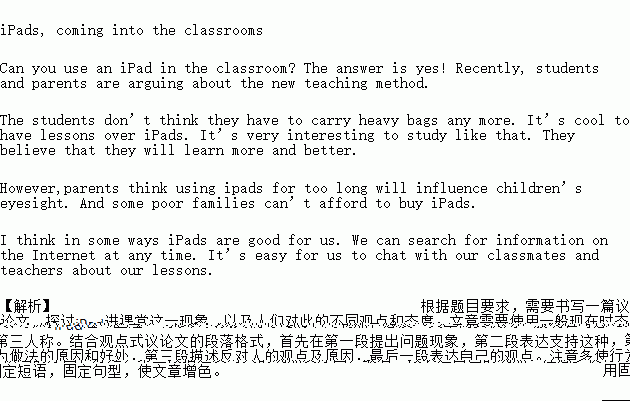��Ŀ����
���գ�ij��ѧ ��iPad�����á�����Ϣ������ѧ���ͼҳ��ǵ����ۡ�����ѧУ��English Newsletter������iPads, coming into the classroomsΪ��������Ļ��������Ҳ������ʾ�����ݣ���Ӣ��дһƪ���ġ�
ѧ������Ϊ | 1.����Ҫ�����ص����ȥ��ѧ 2.�����ʣ�ѧϰ������Ȥ 3.���� |
�ҳ�����Ϊ | 1.Ӱ�캢������ 2.���Ӽ�ͥ���� |
��Ĺ۵� | 1.���� 2.���� |
ע�⣺
1��������������ȷ�����������
2����д���ݱ���������������е������Ϣ���۵�����ʵ����ӣ�
3��������90�����ң���ͷ�Ѹ������������ܴ�������
4������ʹ����ʵ������У���͵����ȡ�
iPads, coming into the classrooms
Can you use an iPad in the classroom? The answer is yes! Recently, students and parents are arguing about the new teaching method.
_______________________________________________________________________________________________________________________________________________________________________________________________________________________________________
 ��Կ���Ծ�ϵ�д�
��Կ���Ծ�ϵ�д�
